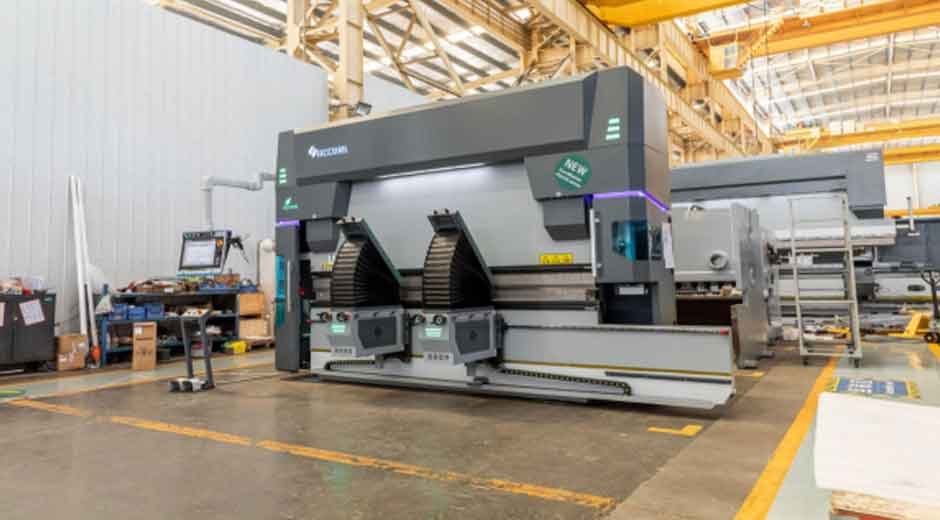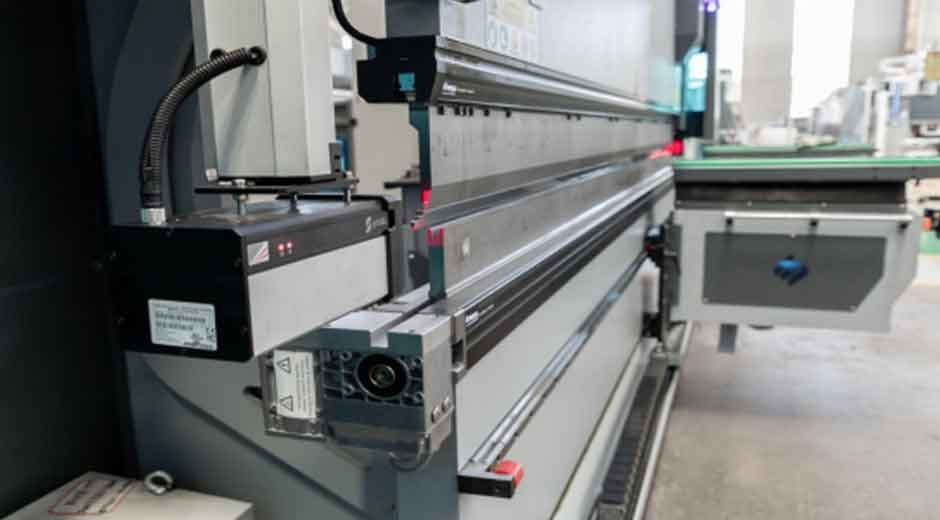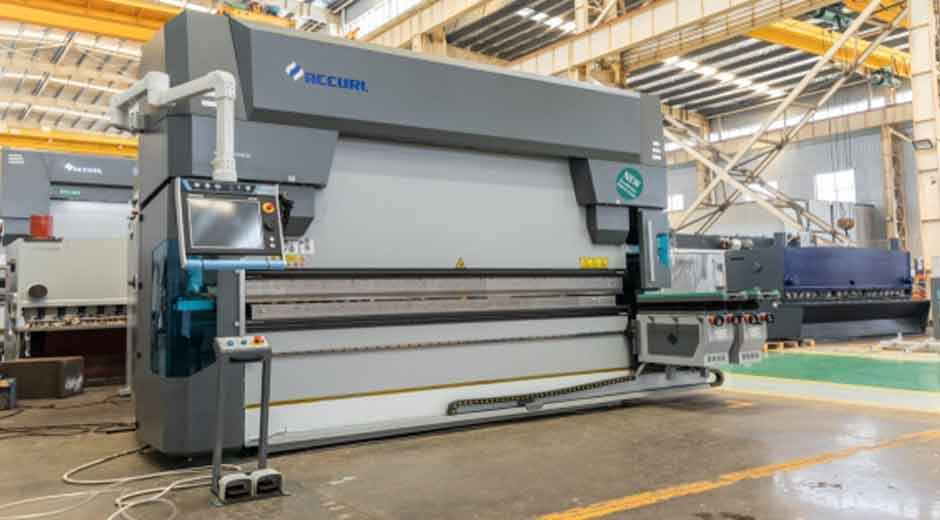Skip to the good bit
ToggleModern manufacturers face rising expectations for speed, accuracy, and adaptability. In the metalworking industry, press brakes have become central to meeting these demands. They not only enable high-volume production but also deliver the precision required for aerospace components, automotive frames, and architectural details. As technology advances, press brakes are evolving into smarter, more efficient systems that directly shape productivity.
What is a press brake, and why does it matter in modern metalworking?
A press brake is a machine tool used to bend sheet and plate materials, most often sheet metal. By applying force through a punch and die, the machine forms precise angles, curves, and folds. Modern solutions such as ACCURL CNC press brakes enhance this process by combining advanced automation with high accuracy, enabling manufacturers to handle complex bending tasks with greater efficiency. Press brakes matter because they allow complex geometries to be created repeatedly with tight tolerances, something critical in industries where consistency defines quality.
Core functions of a press brake include:
- Bending
- Forming
- Accuracy
- Repeatability
How does a press brake work?
The working principle is straightforward but highly controlled. A sheet is clamped between a punch and die, and the ram applies downward pressure to form the material. The control system ensures accuracy across each bend. Operators monitor springback, make adjustments, and repeat the process until the desired form is achieved.
Main stages of a bending process include:
- Setup
- Clamping
- Bending
- Springback correction
- Release
What are the main types of press brakes used today?
Different press brake designs exist to balance power, speed, and efficiency. Each type comes with unique strengths and trade-offs.
Hydraulic press brakes
Rely on fluid pressure to generate force. They are durable and versatile but can be slower compared to newer designs.
- Pros: High tonnage capacity, flexible, reliable
- Cons: Higher energy use, more maintenance
Mechanical press brakes
Use flywheels and mechanical drives to deliver force. They were once the industry standard but are less common today.
- Pros: Fast operation, simple mechanics
- Cons: Less precise, safety concerns, limited control
Pneumatic press brakes
Operate with compressed air. Best suited for light sheet metal and smaller workshops.
- Pros: Low cost, easy to use, minimal maintenance
- Cons: Limited force, not suitable for heavy applications
Servo-electric press brakes
Driven by electric motors and ball screws, offering advanced efficiency and precision.
- Pros: Energy efficient, precise, automation ready
- Cons: Higher upfront cost, not ideal for thick materials
What are the key components of a press brake?
Every press brake is built from essential parts that ensure both safety and accuracy:
- Ram – moves the punch downward to form the metal
- Bed – base where the die is mounted
- Backgauge – positions the sheet for repeatable bends
- Punch and die – shape the workpiece
- Control system – manages CNC programs or manual settings
- Hydraulic/electric drive – delivers power
- Safety systems – prevent accidents during operation
What are the essential parameters in press brake operation?
Operators must consider several parameters before bending to guarantee accuracy:
- Tonnage
- Bending length
- Stroke depth
- Backgauge positioning
- Bending radius
- Material thickness
What is bending tolerance in press brake operations?

Common tolerances in sheet metal bending are ±0.1 mm for thin sheets and ±0.3–0.5 mm for thicker materials. These numbers vary depending on the machine type and tooling condition.
How does material thickness affect bending accuracy?
Thin sheets under 1 mm (0.04 in) bend with high accuracy but are prone to warping. Medium thickness around 3–5 mm (0.12–0.20 in) maintains stable results. Thick plates above 6 mm (0.24 in) require greater tonnage and lead to wider tolerances.
Which metals are most commonly bent with press brakes?
Different metals respond differently to bending forces. Manufacturers select materials based on strength, ductility, and application needs.
Mild Steel (Carbon Steel)
Affordable and strong, used for structural parts and enclosures.
- High strength-to-cost ratio
- Good weldability
- Moderate corrosion resistance
Stainless Steel
Preferred for durability and hygiene.
- Excellent corrosion resistance
- Requires higher tonnage
- Used in food, medical, and chemical industries
Aluminum
Lightweight and easy to form.
- High ductility
- Resistant to oxidation
- Common in automotive and aerospace
Brass
Attractive finish, used in decorative parts.
- Good machinability
- Limited structural use
Copper
Excellent conductivity, often used for electrical housings.
- High ductility
- Prone to surface scratching
Titanium
Lightweight and strong, but challenging to bend.
- High corrosion resistance
- Demanding tool requirements
High-strength alloys
Designed for performance in aerospace and defense.
- Superior durability
- Require advanced press brake systems
Which metal is best for press brake forming?
For cost-effectiveness and general use, mild steel dominates. For high-end precision and corrosion resistance, stainless steel and aluminum are leading choices.
What advantages do press brakes bring to modern manufacturing?
- High precision
- Versatility across metals and thicknesses
- Repeatability for mass production
- Energy efficiency in servo-electric models
- Reduced material waste
- Compatibility with automation and CNC control
Which industries rely on press brakes the most?
- Automotive: chassis parts, brackets
- Aerospace: wing ribs, support structures
- Construction: beams, panels
- Furniture: frames, custom designs
- Energy: enclosures, structural parts
- Electronics: casings, housings
What key factors must be considered when operating press brakes?
- Material selection
- Tonnage requirement
- Tooling selection
- Operator skill and training
- Safety standards
- Avoiding mistakes like wrong die setup or ignoring springback
How to operate a press brake effectively?
Operators follow a step-by-step sequence to ensure productivity:
- Setup
- Calibration
- Tooling alignment
- Testing
- Final production
What safety tips should be followed when using a press brake?
- Guarding systems in place
- Proper PPE
- Two-hand controls
- Regular maintenance checks
What are the best design tips for press brake forming?
- Maintain bend radius ≥ material thickness
- Avoid small holes near bend lines
- Account for springback
- Consider grain direction in sheet metal
Which are the best modern press brake machines on the market?

The best machines combine:
- Precision
- CNC controls
- Automation readiness
- Energy efficiency
- Built-in safety features
Brands leading this space often emphasize CNC technology, ergonomic design, and integration with robotic systems.
What are the main alternative technologies to press brakes?
- Roll forming
- Stamping presses
- Panel benders
- Folding machines
- Laser cutting for shaping
While roll forming and stamping excel in mass production, press brakes remain more flexible for varied batch sizes and custom parts.
Conclusion
Press brakes continue to anchor modern metalworking by combining precision, speed, and adaptability. From traditional hydraulic models to servo-electric systems ready for automation, they help manufacturers meet today’s productivity challenges while preparing for tomorrow’s demands.







